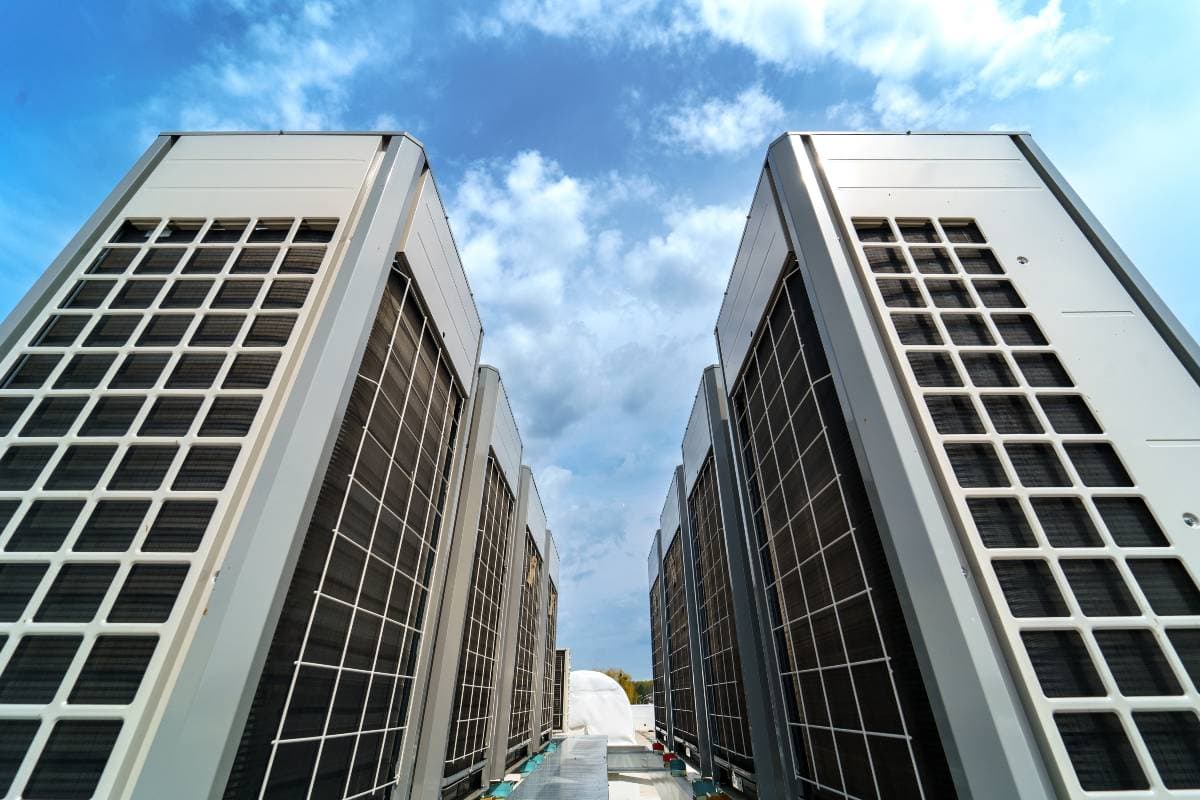After years in the commercial real estate trenches, I’ve seen it all—but California’s new data center energy usage regulations? Game-changer! These power-hungry facilities are facing fresh scrutiny, and as your go-to commercial property expert, I’m breaking down what these energy efficiency mandates mean for landlords and business owners alike. Let’s dive into the regulations reshaping our industry!
Key Takeaways
- Energy-efficient properties will command premium prices in California’s data center market.
- New disclosure requirements demand transparency about power consumption and carbon footprint.
- Strategic building upgrades now will position owners ahead of tightening regulations.
The Rising Power Demand of Data Centers
In my nearly two decades in commercial real estate, I’ve observed the exponential growth of data centers across California. What once occupied minimal square footage has now become one of the most rapidly expanding sectors in commercial property development. This growth, while economically beneficial, has created unprecedented demands on our power grid.
Understanding Data Center Power Consumption
Data centers are inherently energy-intensive operations. The servers, cooling systems, and backup power supplies that keep our digital world running consume massive amounts of electricity. A single hyperscale facility can use as much power as a small city, operating 24/7/365 with redundant systems to ensure reliability.
In my work with property owners looking to lease or sell spaces for data center use, I’ve seen firsthand how energy considerations have become central to these transactions. The power capacity of a building, access to electrical infrastructure, and even proximity to renewable energy sources now factor heavily into property valuations and negotiations.
The Environmental Impact of Digital Infrastructure
The carbon footprint associated with data centers has become impossible to ignore. While technology companies have made strides toward efficiency, the sheer scale of growth has outpaced these improvements. As someone deeply connected to California’s commercial real estate market, I’ve noticed increasing concern from both property owners and tenants about the sustainability aspects of these facilities.
Cloud computing, artificial intelligence, and the proliferation of digital services have accelerated this energy demand beyond what many anticipated. The result is a complex challenge that requires balancing our digital economy’s needs with environmental responsibility.
California’s Legislative Response to Data Center Energy Consumption
California has long been at the forefront of environmental legislation, and its approach to data center energy usage continues this tradition. The proposed regulations represent a multi-faceted strategy that acknowledges both the economic importance of the tech sector and the urgent need for sustainability.
Energy Usage Disclosure Requirements
One of the cornerstones of California’s proposed regulations is mandatory energy consumption disclosure for data centers. This transparency requirement is something I believe will fundamentally change how we approach data center real estate transactions.
As someone who facilitates commercial property deals regularly, I anticipate this disclosure will become a standard component of due diligence. Property owners will need to understand not just the square footage and location of their assets, but their energy profile as well. For my clients who own properties suitable for data center use, this means developing a clear understanding of their buildings’ power capacity, efficiency, and potential for improvement.
The disclosure requirements will likely include:
- Total energy consumption metrics
- Peak power demand statistics
- Power Usage Effectiveness (PUE) ratios
- Carbon intensity of energy sources
- Historical consumption patterns
These disclosures will provide unprecedented transparency in a sector that has historically kept such information closely guarded. For commercial real estate professionals like myself, this represents both a challenge and an opportunity to develop expertise in energy assessment and reporting.
Implementation of Efficiency Standards
Beyond disclosure, California is proposing specific efficiency standards for data centers. These standards aim to reduce the overall energy intensity of these facilities through both technological and operational improvements.
In my conversations with property owners considering data center conversions or new developments, efficiency standards have become a crucial planning consideration. Buildings that can facilitate compliance with these regulations will command premium values in the marketplace.
The proposed efficiency standards may include:
- Minimum PUE requirements for new facilities
- Efficiency targets for cooling systems
- Server utilization minimums
- Heat recovery requirements
- Equipment efficiency standards
For landlords in my portfolio, preparing for these standards means evaluating building systems and potentially investing in upgrades that will make their properties attractive to data center operators. I’ve been advising clients to consider these future requirements in their current renovation and development plans.

Clean Energy Incentives and Requirements
Perhaps the most forward-looking aspect of California’s regulatory approach is the creation of incentives for clean energy adoption. Tax benefits, expedited permitting, and other advantages will be available to data center operators who embrace renewable energy sources.
In my work with property owners, I’ve begun highlighting these incentives as potential value-enhancers for suitable properties. Locations with access to renewable energy or the potential for on-site generation (such as solar installations on large roof areas) may become particularly desirable.
The clean energy components of the regulations include:
- Tax incentives for renewable energy deployment
- Requirements for minimum renewable energy percentages
- Credits for power purchase agreements with clean energy providers
- Benefits for energy storage implementation
- Advantages for facilities that support grid stability
As a commercial real estate professional, I’ve started incorporating these considerations into my property evaluations and client consultations, recognizing that energy sourcing will become as important as location in the data center market.
Impacts on Commercial Real Estate Stakeholders
These regulatory changes will affect various stakeholders in the commercial real estate ecosystem differently. Understanding these impacts is essential for navigating the changing landscape successfully.
What Data Center Operators Need to Know
For data center operators, these regulations represent a significant shift in how facilities are planned, built, and operated. In my discussions with technology companies and data center specialists, I’ve emphasized several key considerations:
Compliance Costs and Timeline
The financial implications of meeting new regulatory requirements cannot be overlooked. Operators must budget for potential retrofits, monitoring systems, reporting mechanisms, and possibly higher operating costs. I advise my clients to develop comprehensive compliance strategies with realistic timelines and budgets.
Strategic Location Selection
Location decisions will increasingly be influenced by energy considerations. Properties with access to abundant renewable energy, favorable utility rates, or efficient grid connections will become more valuable. In my property presentations, I now highlight these energy attributes alongside traditional factors like connectivity and physical security.
Long-term Planning for Regulatory Evolution
These regulations represent the beginning of a trend, not its conclusion. Smart operators are looking beyond immediate compliance to anticipate future requirements. I counsel my clients to build flexibility into their facility designs and lease agreements to accommodate regulatory evolution.
Implications for Property Owners and Landlords
For commercial property owners and landlords, especially those with assets suitable for data center conversion or development, these regulations create both challenges and opportunities:
Property Valuation Impacts
Energy attributes will increasingly influence property valuations. Buildings with robust electrical infrastructure, efficient cooling potential, and renewable energy access may command premium prices. I’ve already observed this trend emerging in certain submarkets where data center demand is high.
Investment Considerations for Building Upgrades
Property owners may need to evaluate strategic investments in building systems to attract data center tenants. In my advisory capacity, I help clients assess the potential return on investments in electrical upgrades, cooling efficiency improvements, and renewable energy installations.
Lease Structure Adaptations
Lease agreements for data center properties will need to address energy consumption, efficiency requirements, and compliance responsibilities. I’ve begun incorporating specific provisions addressing regulatory compliance and energy usage in the leases I negotiate for my clients.
Opportunities for Sustainable Development
Within these challenges lie significant opportunities for forward-thinking real estate developers and investors:
Green Data Center Development
Purpose-built green data centers designed specifically to exceed regulatory requirements may command premium rates and attract environmentally conscious tenants. I’ve been working with several developers exploring this niche, helping them identify suitable locations and potential tenants.
Adaptive Reuse of Existing Properties
Some existing commercial properties have characteristics that make them ideal for energy-efficient data center conversion. Buildings with robust structural elements, high ceilings, and good power access can be transformed into compliant facilities. I’ve successfully brokered several such conversions, creating value for property owners while meeting the needs of data center operators.
Energy Innovation Partnerships
Creative partnerships between property owners, energy providers, and technology companies can yield mutually beneficial arrangements. I’ve facilitated introductions between building owners and renewable energy developers to create integrated solutions that enhance property values while addressing regulatory requirements.
Strategic Approaches for Commercial Real Estate Professionals
As a commercial real estate professional specializing in this sector, I’ve developed several strategic approaches to help my clients navigate these changes effectively.
Developing Energy Expertise
Understanding the technical aspects of data center energy consumption is becoming essential for effective representation. I’ve invested in developing my knowledge of power systems, efficiency metrics, and renewable energy options to better serve my clients in this specialized market.
Building Relationships with Energy Stakeholders
Successful transactions increasingly involve collaboration with utility companies, renewable energy providers, and energy consultants. I’ve expanded my professional network to include these specialists, allowing me to bring comprehensive solutions to complex energy challenges.
Creating Value Through Regulatory Navigation
Helping clients understand and prepare for regulatory requirements has become a value-added service in my practice. By staying ahead of legislative developments and translating their implications into practical business terms, I provide insights that inform better investment and operational decisions.
The Future of Data Center Real Estate in California
Looking ahead, I see several emerging trends that will shape the data center real estate market in California as these regulations take effect.
Geographical Redistribution
While certain areas like Silicon Valley have traditionally dominated the data center market, energy considerations may drive greater geographical diversity. Regions with abundant renewable energy and favorable regulatory environments may see increased development activity. I’m already tracking emerging data center clusters in areas with these advantages.
Technological Adaptation
Advances in server efficiency, cooling technology, and energy management systems will accelerate as operators seek to comply with regulations while controlling costs. Properties that can accommodate these technological evolutions will maintain their competitive edge. I advise my clients to consider technological flexibility in their facility designs.
Market Segmentation
The market may increasingly segment between high-performance computing facilities (with their intensive energy needs) and more distributed edge computing locations that can operate more efficiently. This segmentation will create different property requirements and investment opportunities. I help my clients position their assets appropriately within this evolving landscape.
FAQs
What are the main energy efficiency regulations for data centers in California?
How does the new data from 2023 impact energy use in data centers?
What role does the Energy Star program play in data center energy efficiency?
How do new data centers comply with California’s energy policy?
What is the significance of the Energy Act of 2020 for data centers?
Conclusion
The data center energy usage landscape is transforming fast, friends! But here’s my take after 18 years in commercial real estate: these regulations aren’t roadblocks—they’re opportunities! Smart landlords and business owners who embrace energy efficiency standards now will dominate tomorrow’s market. I’m passionate about helping you navigate these green data center requirements to maximize property values while minimizing environmental impact. Let’s connect, schedule a consultation with me and power up your commercial real estate strategy for this energy-conscious future!




